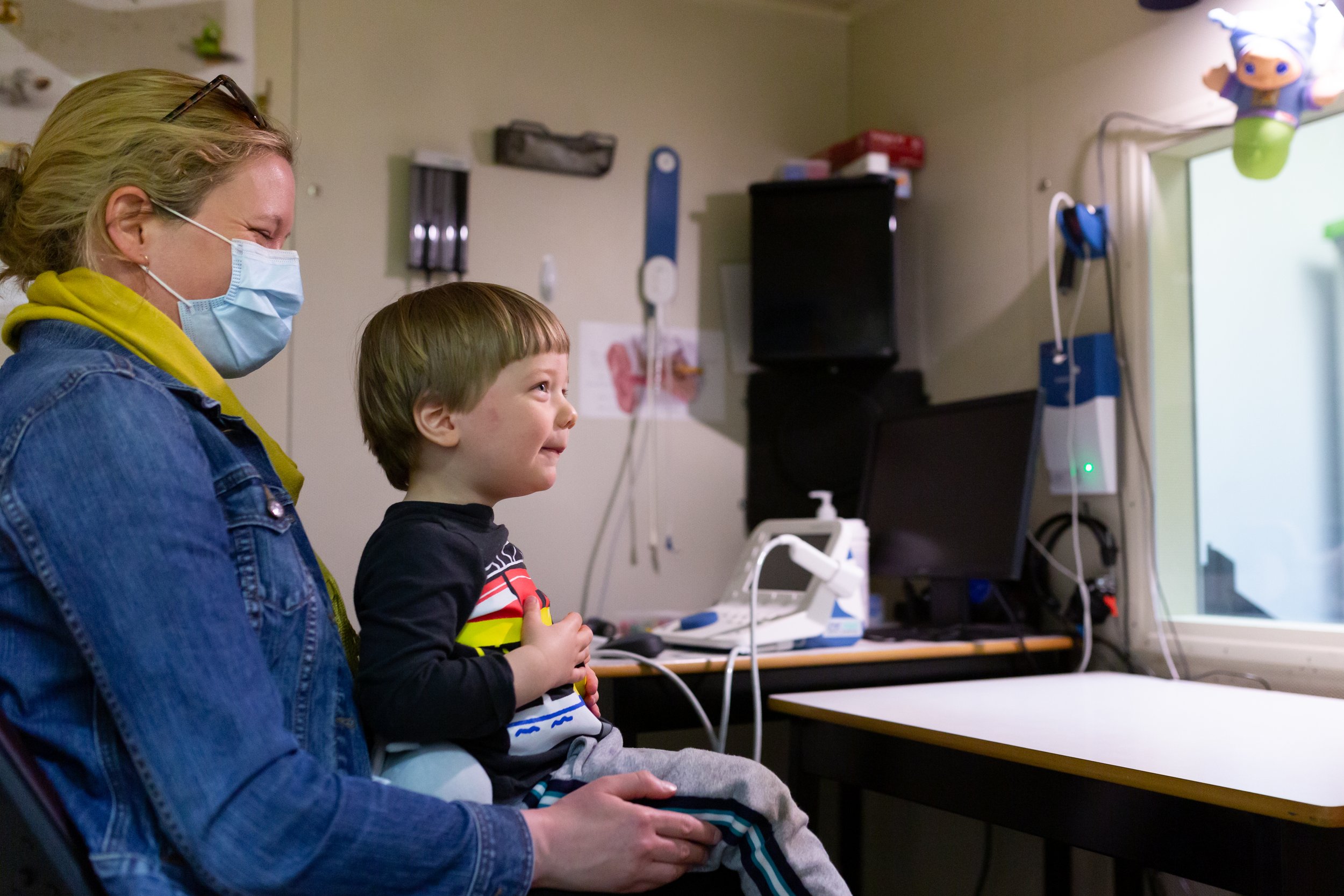
New and improved equipment and technology
Hearing and Speech Nova Scotia (HSNS) was fortunate to receive funding from the Department of Health and Wellness for the 2022-2023 fiscal year to update specific audiology equipment, which is used to measure electrical signals in the brain.
Auditory evoked potentials are one important procedure in the audiologist’s toolbox. By playing sounds through an earphone in a person’s ear, audiologists can measure a client’s response from their brain through electrodes placed on the scalp. The sound played is usually a click or a tone and can be played at different volumes. The audiologist can then visualize the brain’s response to the sound on a computer screen. Did you know the client being tested does not have to respond in any way? In fact, it’s much better if they are calm and relaxed or even if they fall asleep during the test.
This type of testing is generally recommended when there are suspected auditory disorders, which can affect hearing and balance, to monitor the integrity of the auditory nerve. It can also be used to measure a person’s hearing when they are unable to respond to more traditional types of testing. This is also the test an audiologist uses to diagnose hearing loss in babies.
With our aging equipment becoming less reliable, we were thrilled to receive this funding to get new and improved tools. To ensure our decision to invest in this new equipment can serve our clients for many years to come, we secured test models from manufacturers for audiologists to test in their clinics. Their valuable input and feedback, coupled with the responses we received from the vendors we contacted, guided our selection process to secure the best equipment suited for the services our audiologists provide. Soon, our audiologists will receive their brand-new equipment along with relevant training, allowing them to continue to conduct thorough tests for Nova Scotians of all ages.
Some of our clients do not rely on speech to communicate and use alternative means. To enable our team to add devices to our library and help our clients with their communication needs, our HSNS Augmentative and Alternative Communication (AAC) services received funding for new equipment this year. As a result, we’ve added 30 iPads to our lending library, as important tools for both our clients and clinicians. Before clinicians recommend iPads as alternative communication devices, they ensure the family has the chance to try the device through our lending library to determine whether it is a good fit for their child.
Previously, the wait time for an iPad was over three months, affecting the family’s ability to decide whether this tool is the right fit for their needs. With the extra 30 iPads, the wait time decreased from three months to two weeks. This improvement made the program much more accessible for families, helping clinicians better support those families in their decision-making process in facilitating their child’s communication.
Another service we’re now able to offer is a mobile cart loaded with assistive technology for the ICU and acute care floors at the IWK. This offering provides children and families access to this technology, while in the hospital, to help them with their communication and accessibility needs. This equipment is meant to be used not only by the speech-language pathologist but also by the interdisciplinary team in the hospital. The equipment helps children practice and develop their communication abilities using switches and buttons. Giving families and clients this ability to communicate in a barrier-free environment is both powerful and motivating, and we are delighted to be able to facilitate this service for them.

